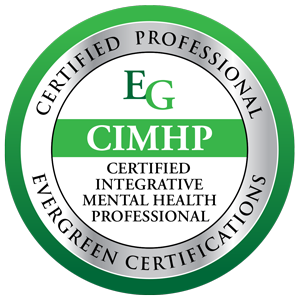

My Holistic Approach to Anxiety Management
Managing feelings of anxiety requires a multifaceted approach that addresses both the mind and body. A holistic approach to anxiety management incorporates natural, practical techniques to promote relaxation, regulate the nervous system, and alleviate physical symptoms and adverse effects.
From essential oils and progressive muscle relaxation to stimulating the vagus nerve through humming or box breathing, these evidence-based exercises empower you to take control of your well-being.
Explore these tools and exercises to create a personalized routine in your daily life that supports your mental and physical health naturally and effectively.
1. Essential Oils (be mindful of allergies) 🌿
- Anxiety Reduction: Research shows that inhalation of lavender can significantly reduce anxiety levels.
- 15 Essential Oils for Anxiety
- Nausea Relief: Smell or rub peppermint oil on your stomach for nausea.
- 6 Essential Oils for Nausea
2. Singing, Humming, Gargling
- Stimulates the Vagus Nerve: Helps reach a state of relaxation by connecting to the vocal cords and throat muscles.
- Humming and singing involve breathing, providing double activation.
- Gargling for 10–20 seconds can strongly stimulate the vagus nerve.
3. Gut Support
- Pressure on the Gut: Use a warm pack or a weighted lap blanket on your belly for 10–20 minutes to activate the vagus nerve.
- Nausea Lozenges: Helpful for anxiety-related upset stomachs.
- Example: NauseaCalm Boiron Homeopathics
4. Butterfly Taps / Butterfly Hug 🦋
- Bilateral Stimulation Technique: Helps ground yourself when feeling anxious or panicky.
- Instructions:
- Place your hands, palms down, on your chest, interlocking your thumbs in a butterfly shape.
- Slowly tap one hand after the other near your shoulders.
5. Emotional Freedom Techniques (EFT) Tapping
- Calming the Brain: Tapping on meridian points signals the brain to relax.
- Recommended Resource: The Tapping Solution (Downloadable App)
6. Binaural Beats 🎶
- Meditation Alternative: These tones change brain wave frequencies when listened to with headphones.
- Alpha (8–14 Hz): Helpful for stress reduction.
7. Ice Pack on Liver 🧊
- Cooling the Liver: Place an ice pack on the right-hand side of your body below the ribcage for 5–15 minutes to reduce overactivity.
8. Typical Nutritional Culprits ⚠️
⚠️ Always discuss supplements with your provider before starting.
- Low Magnesium Levels: Can signal anxiety.
- Sources: Raw organic pumpkin seeds or Natural Vitality CALM Magnesium Carbonate Powder.
- Low GABA Levels: Anxiety is linked to reduced levels of the relaxing brain chemical GABA.
- Caffeine hampers GABA production.
- Genetic issues with glutamic acid transaminase may affect GABA.
- Other Deficiencies: Low levels of omega-3s, B vitamins, and vitamin D can increase anxiety.
- Dietary Triggers: Diet pills, amphetamines, asthma meds, caffeine, antihistamines, and steroids can worsen anxiety.
9. Progressive Muscle Relaxation (PMR) 💪
- Relieves Stress: Learn to differentiate between tense and relaxed muscles.
- Tense specific muscles to feel tension.
- Relax those muscles to understand the difference.
- Repeat throughout the body.
10. Box Breathing 🫁
- Resets the Central Nervous System: Ideal for stress and anxiety.
- How to Practice:
- Exhale slowly, releasing all the air from your lungs.
- Inhale through your nose while counting to four.
- Hold your breath for a count of four.
- Exhale for a count of four.
- Hold your breath again for a count of four.